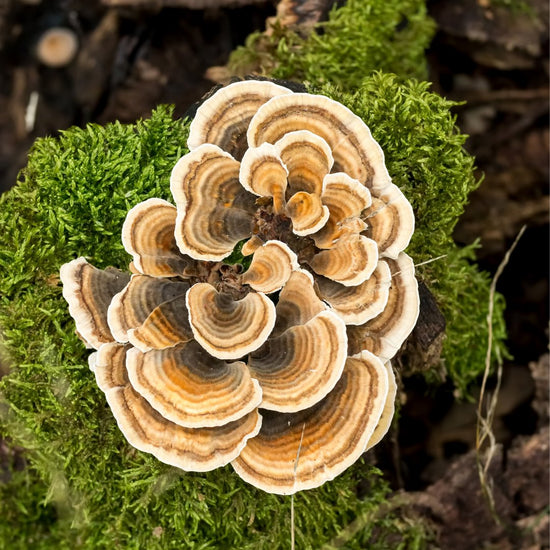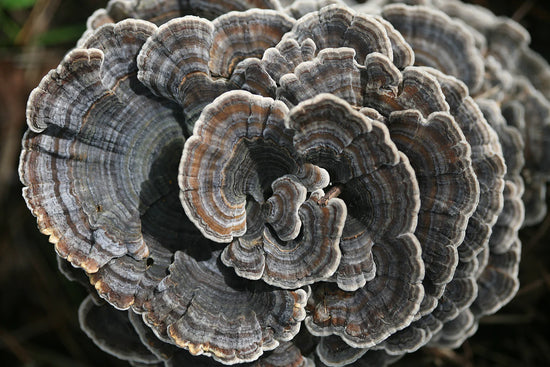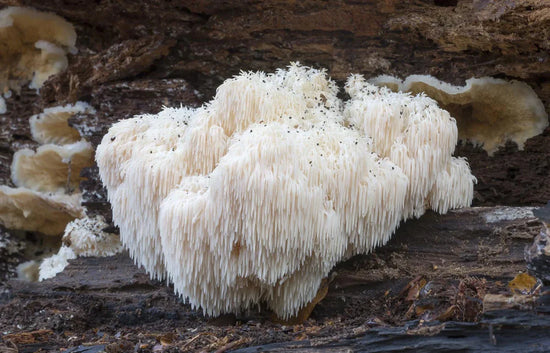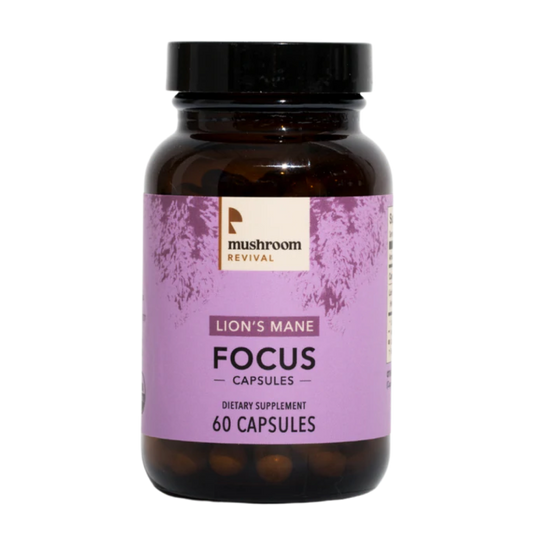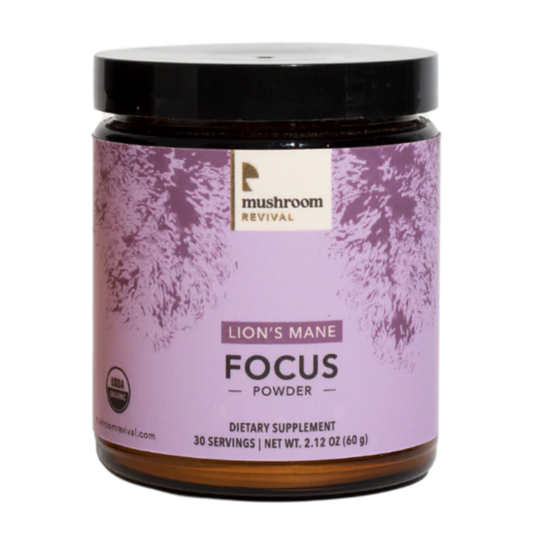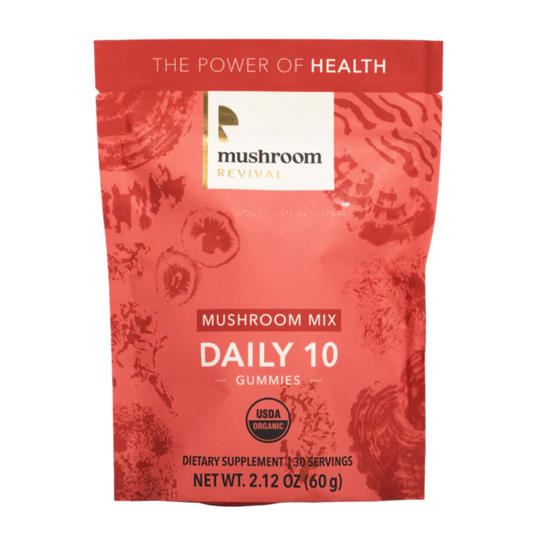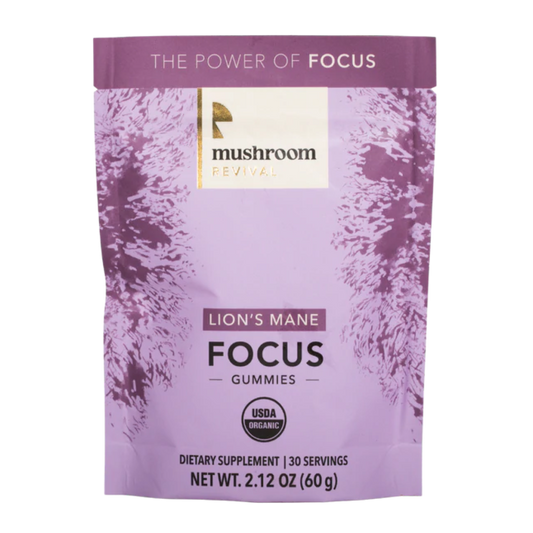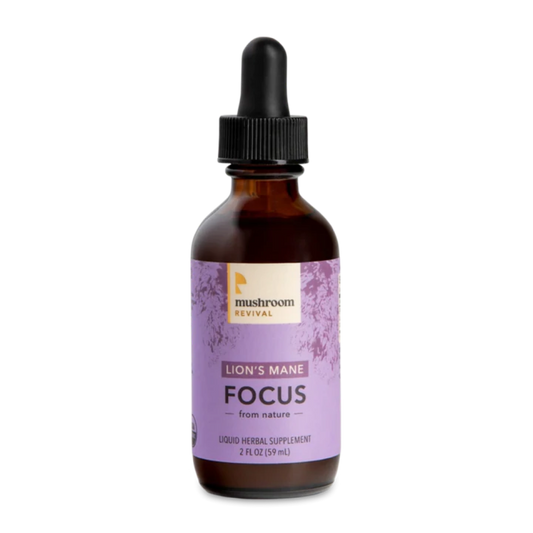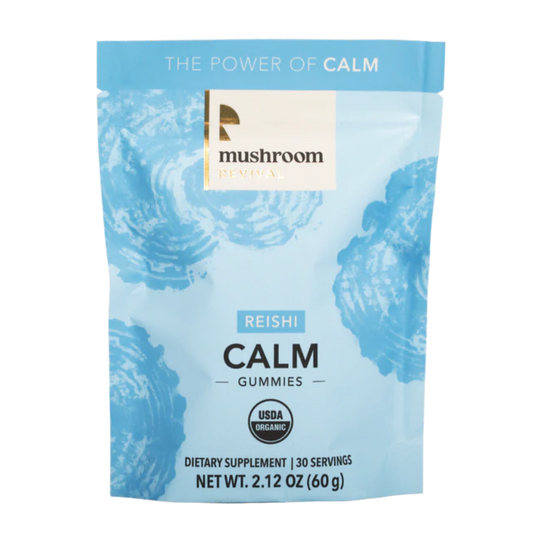Mycopesticides for Malaria Mosquitoes
Zombie fungi aren't just cool — they're extremely useful.
Dr. Brian Lovett is back on the show to discuss the powers of entomopathogenic fungi. We get into the weeds of what makes these fungi equip for success as carnivores, transgenic engineering, the evolution of pathology and more. Brian also shares cutting edge research from the MosquitoSphere in Burkina Faso, where he and his team work to combat malaria using Metarhizium fungi.

Topics Covered:
- Defining entomopathogenic fungi
- Chemical signaling and mechanisms of infection
- Circadian rhythms in fungi, and how entomopathogenic fungi time keep in their hosts
- Mycopesticides, especially to fight Malaria in mosquitoes
- Transgenic engineering of fungi with spider venom genes to target insects
- Metarhizium as a platform fungi for board and narrow range target specific
- Current practices, successes and challenges in the fight against malaria
- Ethics of developing and deploying biotechnology in international local communities
- Synergies between bio and chemical insecticides
- Unique chemical compositions of entomopathogenic fungi
Show notes:
- Brian Lovett's website: https://www.lovettbr.com/
- Cordyceps unilateralis on the BBC: https://www.youtube.com/watch?v=XuKjBIBBAL8
- Genetically engineering fungal pesticides: https://onlinelibrary.wiley.com/doi/abs/10.1002/ps.4734
- The Insect Pathogens: https://onlinelibrary.wiley.com/doi/abs/10.1128/9781555819583.ch45
- Zombie Insect Presentation with Genspace: https://www.youtube.com/watch?v=KF7NOiREHlU
- Articles mentioned: https://www.bbc.com/news/health-48464510
- Transgenic Metarhizium: https://science.sciencemag.org/content/364/6443/894.abstract
TRANSCRIPT
You're listening to the mushroom revival podcast.
Lera 0:13
Today on the show more fungi and insects stuff, we are revisiting some of the mycology behind cordyceps and other insect eating fungi. We get into the weeds of the mechanics of host infection, evolution, genetic engineering a fungi as a myco pesticide, and so much more.
Alex 0:30
We bring you yet again, Dr. Brian Lovett. So most people refer to entomopathogenic fungi is just quarter steps. What exactly are entomopathogenic fungi,
Brian 0:41
I would say entomopathogenic fungi generally I would define as a fungus, which can cause some sort of disease and an insect. So typically, pathogens will result in the host dying, but I would say that it is some fungus which can either grow on or inside of an insect. And usually the pathogens will end up killing the host at some point along the way. Can
Lera 1:05
you describe just in general, how an entomopathogenic fungi would select for its hosts? Because, you know, we know cordyceps unilateralis usually, that's what's been featured in the BBC, it's kind of the poster child of intermorphic s fungi. But it's amazing to me how species specific they can be. And if you could just make some comments on how like the mycology of that host preference what what's going on there.
Brian 1:33
So, host specificity is a really important concept in biology generally, and a really complex concept that I would say, there's still a lot for us to learn. You know, even if it's very, very well studied pathogen, I think that there's still a lot for us to work out. But with these entomopathogenic, fungi, what they're recognizing on their preferred host, are the micro environment on the host. So in the case of insects, they have segmentation. And depending on where the fungus lands in the insect, even if it is its preferred host it needs to land in the spot where it can germinate. And it can start to sense that it's on the appropriate host. So that micro environment, which you could sort of think of as high humidity, particularly between segments, that's one thing, which is an initial trigger. And then the fungus can also sense physical landmarks on the insect so it can find and specifically tried to initiate infection on hairs in the insects. And it will also secrete at least in the case of the fungi that I did my PhD on metarhizium fungi, they'll actually secrete enzymes which they can use to taste the host. So they can look at the components of the cuticle, mostly, or you're probably thinking about nitrogen and carbon ratios that they can use to tell which hosts they're on. Or they could be looking for specific compounds that the host is presenting that they would have receptors for. So all of those things sort of together work to help the fungus determine if it's a host that it wants to ultimately try and infect. And the fungus deciding to infect the insect is sort of a one way ticket. So that's something that absolutely on the surface needs to be determined. Because once you start trying to grow into something, you've decided that you're going to win that battle, because the interest of the fungus in the interest of the insect, in the case of a pathogen are directly in conflict. So the fungus really needs to be sure it's an insect that it can overwhelm before it actually burrows in and that process will occur at the surface of the cuticle before it's fully committed. When we think of specificity, we kind of think of it as a yes, no. And you're kind of talking about like a pattern where we say, okay, they do in fact, this sort of they don't infect this order. And the way that it that it works more realistically Is that what you're dealing with is a dose required to kill. And all of these pathogens will will try to give some sort of shot or will try to engage in that conflict to some extent, but only some of them will actually be successful in causing disease and overwhelming host and reproducing. So, in that sense, when you're talking about host specificity, you're talking about more of like a gradient where if you get too far away from that preferred host, it's going to be less and less successful, or it's going to be less and less likely to try to cause infection. So in that way, you can think of host specificity as being much more of a gray area and much more of sort of a probability of whether or not you'll see the ultimate disease and the insect and some fungi that range is very, very tight to the point where you can say some fungi have specialized to one specific species of insect and They'll have very broad ranges. And this has a lot to do with the biology and the repertoire of enzymes that these different fungi have. But because of that, because we have so many fungi, which have a broad host range, which don't seem to care which insect they're on, and a high enough score concentration will try to infect a broad swath of insects. I think that any orders of insects where we have not identified and it's like pathogen is simply because we haven't gone looking hard enough. I can't think of compelling reason why any insect would be absolutely invulnerable to insect kotha genic fungi. And if you do find that insects, let me know because I'd be really interested in studying how that happened.
Lera 5:43
So, to segue off of this, we grow cordyceps militaris. And this is one of the few entomopathogenic fungi that you can grow on a vegetarian media, which is impressive, because when you think of a mushroom, it has a diet that's very specific, usually, I mean, there's brown rods that will consume a whole slew of things. But entomopathogenic fungi seem to be a lot more picky about what they're eating. And I was wondering if you could just talk about this fungal diet that they have. Most people are familiar with the mushrooms that are digesting cellulose and lignin and these plant based more vegetarian media, but what are they getting nutritiously from these bugs? Is it maybe it's like what kind of goodness are they extracting?
Brian 6:35
So that's a really interesting framing the end and I think, I think it's a good point, because one of the things that makes these fundraiser fascinating is that they're, they're eating animals, right, so their current kind of progress. And that aspect of the biology, I think makes them a little bit more exciting, because in the insects, we can see ourselves. So it's like, oh, this is this is like a pathogen of us, too. They have similar needs, they have similar interests. And that can make them a little bit more scary. But the the taste for insects, I'm not sure that I would link it to their any sort of like meat or like muscle oriented thing that you would that you would think of that specific to the insects, the fungi or after things which are much more fundamental from their house. And these are the same sorts of compounds that they would be looking for with with plant pathogenic fungi, which is they're looking for nitrogen. And they're looking for sort of general sources of sugar that they can break down into, into simpler sugars. And they're looking for proteins, which are, which are going to be present in whichever host your media you're looking for that they can then digest down into into simpler into simpler compounds that they can use to make more fungus. So I think the distinction is really interesting. And I think it speaks to some of the things that are exciting about the fungi. But I don't think that the fungi really care or distinguish too much about whether or not they're eating a plant or an animal.
Lera 8:02
So how should we think about their propensities to their insect hosts? If these fungi get sugars and nitrogen from an abundance of organic matter why evolved to infect an insect? You know what I mean? Do you think it's because there was an untapped food source? And they were seeing an opportunity that many other organisms didn't?
Brian 8:23
Yeah, yeah, I think so. I would say that they're, they're equipped for it. They have an evolutionary toolkit they can use to to access those nutrients, which makes them unique, particularly organisms like insects, they have their own immune system and an immune response, which the fungi have to be prepared for. And not a lot of micro organisms are able to do that. So in that way, they are accessing something, which is not on the menu for others. So there's that opportunity there. And I think that's the reason why there's an idea of fungi, preferring to break down what are preferring those sorts of sources. And the reason why they do that is a similar reason, because not very many things can break down that resource. So again, it's sort of fungi, exploiting what's available and an opportunity. And these insects certainly are an opportunity for that. Now insects do become on the menu for everyone when they die and fall to the ground. But these insect pathogenic fungi are perhaps a little bit more impatient and want to take advantage of that resource before everyone else can have a bite out of it. I think that's a totally fair way of thinking that
Alex 9:32
if insects are resource for nutrients, and the circle of life is to eat nbe in winded insect eating fungi show up. I do
Brian 9:41
know that there are examples of fossils of insects that have been killed by these entomopathogenic fungi. So they have been around and they have had this lifestyle for quite a long time. But But you're right to think of it more in the sense of the host, right? When did when did insects evolve and is that probably around When the origin of these insect killing fungi occurred, because once that resource became available, it's natural that micro organisms would evolve to better exploit and adapt for that resource. So I think that they probably emerged quite quickly after the emergence of insects. And I, I also think that you're right on about the proximity to insects. And to think that fungi that are associated with plants are associated with places where insects are known to hang out would be the ones that would have the the most and the earliest opportunities to infect insects. But you know, that's an that's an evolutionary mystery that I think we're going to continue to unravel for decades to come.
Lera 10:40
So last question on the basics of these types of fungi. I attended one of your classes at Gen space, the zombie fungus edition, which was awesome, and it's on YouTube, free for everyone. But you talked about timekeeping and fungi and how they adapt to their hosts circadian rhythms to infect and exploit them more efficiently. How are they doing this? And more fundamentally, why are circadian rhythms important to the fungi period?
Brian 11:10
What's interesting is that we sort of have a fusion of two clocks. So all organisms have their own circadian rhythm, right? Like we have our own our own daily rhythms. If you stop using your alarm, there's going to be a time, when you're likely to wake up, there's going to be a time when you start, start feeling tired. These are sort of natural parts of the biology all around us. And ultimately, what they allow us to do is to partition our activities to times in their most appropriate so we're active during the day and will sleep at night. And when we're sleeping, our body will be engaged in different activities than when we're going for a walk or exercising. Right. And the same thing is true for insects, they need to be able to time their behavior, they need to be able to time parts of their metabolism. So each of us sort of have a ticking clock inside of us. That is sort of helping to determine lots of things about our biology up to and including our mood. And with fungi, they also for the same really basic reasons have to maintain a circadian rhythm. And that's how you can have mushrooms showing up at a certain time of the day. Or you can have spores which are appearing in irregular cycles depending on the light that they have. So if you've ever cultured fungi on like a petri dish, and it is either fresh from the field or has access to light, you may notice that it will grow and rings and that you'll see these circadian rings appearing on your petri dishes the fungus is spoiling on particularly molds this can be this can be quite obvious. And that process is again tied to really fundamental needs and fungus. Now when the fungus invades a insect, the fungus is going to lose access to a lot of the cues that it uses to keep time during the day, a primary one would be would be light, right. And if you're inside of an organism, if you're multiplying inside of it, you're not going to have the same cues. But still there are proteins which will cycle and continue to keep time inside of the insect. And the fact that these fungi are able to maintain their own clock inside of the insect and also perturb the clock of insects that they're within shows how these clocks can sort of interfere with one another or be used to to essentially sync up with one another. And this allows the fungus to better sync its lifecycle with the insect host and be able to potentially manipulate the insect host at a specific part of that circadian rhythm. And you do see with a lot of insect pathogenic fungi, particularly the really highly specialized ones, that they will always kill their insect at a certain time of day where there will be a really tight normal curve where you can reliably find the fungus killing the host. And a lot of that may have to do with the the conditions of the fungus prefers outside, maybe it wants to kill the host when there's high humidity outside. And high humidity is tied to a certain time of day. But this sort of tie in and clock clock keeping inside of the insect host is really important for the success of these fungi. And it's something which is really actively under study. And I think there's going to be a lot of really interesting things that we can find out when methods to be able to study this, this quite complex phenomenon. Continue to build
Alex 14:47
actually found out about you and your research via your work in Burkina Faso with a metarhizium species. I'm gonna butcher the the second part. Ping Chauncey Is that correct?
Brian 15:01
I say things giants, but you may be more correct than me.
Alex 15:05
Who knows, but knows, I probably trust you better than me, but enhanced with the venom of a funnel web spider to kill mosquitoes carrying malaria. And I saw pictures of these mosquito spheres. And I think it was BBC, actually who did an article about you and reviewing your research. And I think it was 99% of the mosquitoes were killed in 45 days, I'm just like, give us all the dirty details, because that was Yeah, blowing my mind.
Brian 15:37
So this is my PhD work. This is the primary primary focus of my PhD, was developing this this bio pesticide. So the lab that I had had been working in the st. Leger lab at the University of Maryland, they've been working on genetic tools and strategies to genetically modify these entomopathogenic fungi for a while. And that work was initially geared toward understanding the biology of them, in order to move an organism from, you know, something interesting that we found outside to a model for Molecular Biology, you need to be able to knock out genes in the organism. And you also need to be able to potentially add those genes back or add in different genes to be able to probe the function of those genes in that organism. So these tools can be really useful just for understanding biology, and can be used in lab. But once you have those tools available to you, you can also use them to create transgenic technologies. So these are not fungi that we're modifying, because we're interested or or for study, but fungi that are being being developed for application as a bio control technology. So because these entomopathogenic fungi already have these really great natural abilities, so in particular, they have host specificity, which is built into them. So depending on what strain you work with, you can have a strain, which very narrowly infects one kind of insect or you can have a broad host range, that was your preference. And then they also have all of the tools required to burrow their way into an insect and ultimately kill that insect. The other thing that these entomopathogenic fungi, the the metarhizium, that are in the genus metarhizium have going for them is that they grow as molds. So they're very cooperative in the lab. So some of the other fungi that we've been talking about, particularly fungi that, that produce these really interesting, like fruiting bodies on on their insect house, they really need their insect to to grow, they have such high specificity to their particular insect that they need to have, they need to have an insect in order to produce spores, which are the infective structure of these fungi. But these these metarhizium species, they'll grow as molds and you can grow them on artificial media in the lab and produce lots and lots of spores. And in fact, you can grow them in factories in fermentation chambers, and produce a fine powder of the spores that you can apply. And in fact, they're often used in agriculture to control agricultural pests quite successfully, particularly in Brazil, they they've been used to control spittle bugs. And it works in this scenario, because in a crops like sugarcane, you don't have to have an immaculate perfect plant to be able to sell it. So you can afford to wait a little while for the fungus to burrow into the insect and ultimately overwhelm the insect before you actually have control of that insect pest. So you can accommodate a little damage in some crops. And in these scenarios, these entomopathogenic fungi, they work really great. They can be mass produced, they can be applied to crops, and they can control that mintek past. But when you're talking about something like human health, when you're talking about a mosquito that's transmitting disease from from person to person, you can't really afford to wait. You can't really afford to wait, you know, over a week, maybe even two weeks before the insect is controlled. And because of that, we had developed a technology where these fungi are hypervirulent. So there are lots of ways that you can create a fungus which is better at killing insects. The one that we advanced the farthest and the one that we tested and in collaboration with our colleagues in Burkina Faso was using arthropod venom. And the reason why arthropod venom was so useful for us is because arthropod predators and when I say that, I'm talking about spiders, I'm talking about scorpions, I'm talking about these these arthropods, which inject venom into their prey. Those have evolved over the course of millions of years to very specifically and quickly in capacitate insect prey now of course, when we think of a bite from a spider, we're not thinking about the venom that causes insects to become paralyzed, we think about the venom that hurts us the peptides, the toxins that hurt us, but in actuality, the venom from a spider, you can think of more as a cocktail of peptides. And some of them are meant to ward off things that the spiders are afraid of like us, and they can cause us pain. But other compounds are really specific to their insect prey. So those peptides, those insect specific peptides are an opportunity to make insect pathogenic fungi.
more virulent. And the way that you can accomplish that is by having insect pathogenic fungi express these toxins when they're inside of insect blood. And the way that you can engineer that is through our understanding the biology of these entomopathogenic fungi. So metarhizium, we know expresses a suite of enzymes to be able to break through the insect cuticle, it expresses some other enzymes which allow it to produce the pressure required to borrow and push through that insect cuticle as it's breaking down. And then once it makes it into the insect blood, it completely changes shape. So normally metarhizium grows as a typical filamentous fungus. But when it makes it to the insect blood, it completely reorganizes its cellular structure and grows as a yeast like blast a spore is what we call them. And this stage is very different structurally. And the primary function of the stage is to avoid the insect immune system. But because there are so many genes, which are specifically required at that phase, we can use promoters for these genes, the on off switch for gene expression, to turn on the expression of a spider toxin. So when that occurs, while before the fungus would typically try to start killing the insect, you have a highly potent toxin expressed in the blood of that insect. And using this, you can, you can reliably shave a few days off of the time for infection on in these entomopathogenic fungi, and we've developed in the st. Leger lab, multiple different strains of these fungi, which have different toxins. And we've even created some strains that have multiple toxins of these from these arthropod predators. And these are really, it's a really effective strategy to create these hypervirulent fungi,
Alex 22:43
I always imagine and I want to see like, the roundtable discussion of making this you know, and just being like, yeah, we should take this fungi and then, you know, genetically engineer it to have this venom of this specific spider and attackmen like, it blows my mind and how
Brian 23:06
did you come up with the this is the this is the power of scientific collaboration, right? So we are really interested in the biology of these fungi. And we understand their gene expression to the point where we can be like, this gene, the gene that we ended up using for that on off switch is a as a collagen gene, which when the fungus is bathing and insect Hema length, it expresses this collagen on this collagen like protein, which surrounds the fungus. So So why why do you think the fungus would surround itself with collagen?
Lera 23:41
So its system doesn't detect it?
Brian 23:45
Yeah, so collagen is one of the most animal proteins. And because of that, the immune system cannot recognize any of the molecule or the any of the compounds on the outside of the fungus, which would give away that it's a fungus.
Alex 24:03
Well, entomopathogenic and fungi are sneaky, motherfuckers. Like, they're so evil, they're like,
Brian 24:10
so so so to sort of finish that thought, this is the beauty of collaboration, because we're really interested in the biology is fungi. And then we have colleagues who are in Australia, who are really interested in the toxins that are being produced in arthropod venom. And when we realize that we have this platform, we can start to work with these other colleagues and be like, okay, which compounds would do you think would be good for, for controlling insects, which of your toxins are the most effective and the biases that use to that sort of collaboration can help to bring these really interesting off the wall concepts because these two fields sort of collide and you realize, Oh, we both have something kind of useful, which together would be really useful. And then the other part of that, of course, is our collaborators in Burkina Faso who are working on innovative new technologies to control malaria mosquitoes. So we we could have very easily and in fact, have create other strains to kill other insects, you could use a metarhizium strain, which is specific to locusts. And you could use this hyper roulements to kill locusts very quickly. But we can actually use the experience and the motivations of our of our colleagues in Burkina Faso to create this technology, which would be useful for malaria control, and in the context, that they require that new technology. So this sort of collaborative nature is going to help define what technology gets developed and how that ultimately gets applied. There is another technology that was developed before I joined the lab that sort of speaks to the power of this fungus as a platform, which is really like we created a strain of fungus. And you can hold a plate of it. And it's, it's physically there and as an entity. But when when I'm talking about this work, or when I think about this work, I think of it much more as a as a platform, right. And it's an idea what we did, and you could mix in any toxin you wanted and have a similar any insect specific toxin that you wanted and have a similar effect, right? So you could rotate these different toxins in and you could envision your own biotechnology which would solve whatever specific pest problem you have using this as a platform for development. So So one example of an application of this was a study done before agenda lab where they worked on instead of killing malaria mosquitoes quickly, they targeted the malaria in the mosquitoes. And the reason why you can do this is because when a mosquito is infected with malaria, or the malaria parasite, Plasmodium, and this is one thing about Dr. biology that if you'll indulge me, I just want to hit the nail on the head, which is that when there's a disease that's factored by insects, the insects themselves get sick with that disease, typically. So it's not like the insects are maliciously going around and are infecting us. There's a whole cycle of these diseases, which typically progresses through the insect. And in the case of malaria, the mosquito takes up the malaria parasites in the blood meal of an infected person, those parasites migrate into the gut of the mosquito. And they continue to develop in the gut of the mosquito, they actually will mate in the they actually will mate in the mosquito first and then migrate to the blood, or migrate to the stomach. And then once they're in the stomach, they'll rupture out the other side of the stomach to emerge in the hemolymph in the blood of that insect. And because there's this face, these sporozoites, which are trying to migrate through the blood to the salivary glands, so that they can be transmitted to the next person, where the malaria parasites and metarhizium both are co-habiting the blood, you can use metarhizium to express proteins that target and prevent the development of malaria while it's in the blood. So they tested a couple of methods. One was using another arthropod toxin, which instead of targeting insects, was targeting microbes. And then the other strategy that they used was a human antibody having the fungus express a human antibody to malaria when it's in insect blood, or to express a protein that competitively binds to the salivary gland, which prevents the parasite from moving from the insect blood into the saliva, which is when it gets injected into the next person. So those strategies use the same promoters use the same fungus. But they allowed they allowed that platform to target a different organism entirely, the Plasmodium, the malaria parasite when it's inside of the mosquito, and they didn't result in the mosquito dying sooner, it resulted in the mosquitoes effectively being cured of their own malaria infection.
Alex 29:13
This is wild. And so in innovative and exciting, I, I wonder if you ever experienced pushback from the communities in Burkina Faso? And if you know while you're pitching your idea and say you're working with a fungus and in spiders, and all these generally creepy things, how are you navigating that pushback in your research in the real world?
Brian 29:41
There are a few things to unpack there. The first thing that I would say is that in particular, Malaria is such a huge problem and it affects so many people every year, not just people who die but but people who get sick and arguably malaria has caused the most stuff humanity has ever seen. So it's very hard to make an argument that we should hold punches in prevention of malaria. Right, particularly right now. Because the best method that we have had and have currently to control malaria mosquitoes are chemical interventions, pyrethroid insecticides on on bed nets. So, so insecticide treated bed nuts, and also indoor spraying, of pesticides. And unfortunately, those campaigns, while very effective and responsible for really great control are no longer as effective, because mosquitoes have evolved resistance to chemical insecticides. So we are at a tipping point where we've made so much progress against this disease. And the current frontline is failing. And we don't have a lot of tools that are available to us to try to integrate into a program to control mosquitoes. So I think that it's a really high bar to be like, well, I don't like this idea. So we should not continue to develop it. Because the consequences are really dire and continue to be dire every year. So that's, that's one issue. The other thing that I would say is that throughout our project, and when I had joined the lab, this this collaboration was already established, our efforts, particularly in Burkina Faso, have been led by our colleagues. So they work at the center mirages, and the Institute of Health Science Research in Bilbo Jia lasco, and Burkina Faso. And they have had a long history of working with the community where our malaria sphere was, was built. And we, we it was, it was a huge priority of the of the project, to make sure that we were engaging with the community that people were aware of what we were doing that we had regular visits, to discuss our work with, not just people from the village and people locally, but officials all across the government in Burkina Faso to make sure that that work was done in a responsible way. And I think that's really important for for any kind of projects, to have one local development and leadership of the project. And to that, it's actually guided toward something that's needed. A lot of times at biotechnology, you'll see that it's being developed because oh, we could write. And I think that it's really important that there's a compass toward producing something which is going to have a positive effect, and producing something which is needed. And in the realm of malaria, this project falls squarely into that category. So I think that those things are really important context for understanding the development of it. And I wouldn't necessarily say that these things are stacked against us, or are something that I would even take, personally oriented toward our project, because, of course, our project is being developed in the environment that surrounds us. And there are people who do not like genetically modified organisms, and there are organizations, which have missions to, to combat the development of genetically modified organisms, and that's just a reality of the world that we live in. So I think, for me, I'm more interested in having discussions with people or, or having colleagues who are from whatever community where are these discussions are happening, have discussions to understand why people are afraid of genetically modified organisms, and to articulate the technology that we're developing, so that they understand why we're doing it, and it's up to them whether or not they they support that technology, and I wouldn't really seek to frame it in a way that's that's combative, or in a way like, Oh, we had to fight against this. And we still succeeded, because I think that development of of anything is really a dialogue. And you have to make sure that you are constantly paying attention to and welcoming people to, to this conversation, whether or not they're opposed or supportive of your technology.
Alex 34:19
Beautifully said, and are you currently looking for funding for this project? Is it mainly through the University of Maryland is the University of Maryland, right?
Brian 34:31
So the work during my PhD, which was the testing of this technology in a summerfields facility, and we call that a mosquito sphere, and that is a essentially a very large greenhouse, but instead of having glass it has a double layer of mosquito netting. And what that does is it allows environmental conditions into the compartments that we can use for experiments, but it prevents any of them Mosquitoes in our in our fungus from leaving the compartments. And having that facility and being able to test in these compartments which could fit a experimental house and vegetation. And water breeding breeding sites for mosquitoes large enough that the mosquitoes could actually breed in them was really important for establishing some of the statistics that you described at the beginning of this conversation, which is how much of the population was controlled at the end of two generations and, and what was the survival of a large population of mosquitoes that were challenged with a cloth impregnated with this fungus, transgenic or otherwise. And that work on was conducted through the course of my PhD published at the end of my PhD, and was entirely funded by the National Institutes of Health, NIH. And currently, we have these these really promising results from our some my field experiments. And we're working to develop some of these other aspects of the technology that I was that I was describing. So in particular, community engagement, to make sure that we are communicating our product, our technology, and how we would like to move, move it forward with the community, and also on regulatory aspects of developing a new transgenic technology. And these sorts of things aren't really going to result in a lot of papers, which is how progress is typically monitored in academia. But these are really important conversations that we have been having, and are going to continue to have, which should ultimately lead to some new sources of funding, and also a direction which is, which is again, led by our local collaborators.
Lera 36:43
Thank you for the work you're doing. It's wonderful to see some truly productive mycology in the arena of fungal biotech. It's not just amazing research. But you know, we can only imagine what you and your team and the locals have poured into this. So hats off to you.
Brian 36:59
Thank you, I do want to be clear that this technology is not something that I envisioned will eradicate malaria, where malaria mosquitoes, I see this as one tool of many, including hopefully, chemical insecticides, because they've been so successful to try to control mosquitoes together. And I think that that our best chance to control these mosquitoes generally, is to integrate multiple techniques together, and to continue to change those techniques to rotate in new technology so that we can stay one step ahead of them. Because we've learned time and time again, that if we just try one thing that works everywhere, that we can have resistance and resurgence. And I think viewing the technology as part of a larger hole is really important for development. So one example of this is work that we did to try to test whether or not mosquitoes that are infected with metarhizium respond the same to chemical insecticides. And what we found was that mosquitoes that are infected with this fungus that were previously resistant to these chemical insecticides becomes susceptible. Now we don't know if if there's a there's a mode of action, which is which is being exploited or opened up by infection, or if it's just simply, they are overwhelmed with dealing with the pathogen and the challenge of the chemical insecticide. But what we learned from that study is that chemical insecticides, and these, these transgenic entomopathogenic fungi, can work together to synergistically kill more mosquitoes, and importantly, kill the mosquitoes that are resistant to the chemical insecticides. So in that way, we can view the fungi as an opportunity to bring chemical insecticides back on the table, to a point where they can both be used together, perhaps at a lower amount.
Lera 38:53
Thank you, Brian, do you have a favorite into a pathogenic fungus?
Brian 38:57
Um, so I feel because I've spent so many years of my life researching metarhizium that metarhizium has to be my answer. So any metarhizium species will do for me?
Alex 39:11
Is there any research that you're dying to do or see somebody else
Brian 39:16
do? I would say that I am dying to continue to develop these fungi. As a platform for biotechnology. I think they have so much potential to do real good in pest control and in the lives of so many people that I want to continue to support that work and I want to make it easier to to create and develop transgenic insect killing fungi in the future. This is something that we're kind of trailblazing with the technology that I worked on in my PhD but I hope that you know, at the end of my career, that There are lots of people that are doing this and that the full potential of these fungi are realized,
Alex 40:06
the way you emphasize dying. was really funny in that context. And it sounded like you were signing your life away to entomopathogenic. fungi. So final question that we we ask all of our guests that come on our show, this is kind of a spin off that question. But if entomopathogenic fungi could say one thing to the whole human race, what would they say?
Brian 40:35
And from how to drink fungi? I think that they would say, How can I help?
Lera 40:42
Yeah, I love it. Some of the most interesting chemistry comes from entomopathogenic fungi, cyclosporin, being an example. I mean, what a powerful molecule. And I presume that the eloquence of these compounds are from its bold nature of infecting organisms with an immune system, you know, just figuring out how to do that how to crack that code. And so pathogenic fungi are evolutionarily really productive and original beings.
Brian 41:11
Yeah, one thing that we haven't really talked about is how closely related we are to fungi. And fungi have cotton, which is the major compound and exoskeleton of insects in their cell wall. So it's really not, when you think logistically of like what they would need to be able to break down an insect or to be able to understand and manipulate the biology of an animal. They're really not that far off in the grand scheme of things. So it's not too surprising that they that they work that out, and the fact that they, their survival is tied to how they manipulate these organisms, and how they conduct the immune systems that these organisms, it stands to reason that they're going to be lots of useful compounds that they create because they're constant, constantly manipulating the biology of insects, which, at the end of the day, not very different from us. Beautiful.
Alex 42:13
Thanks for coming on.
Brian 42:15
Yeah, this is really fun. It's good to get a chat with both of you. I really enjoyed these questions. I thought they were really interesting. Hopefully your listeners do, too.








